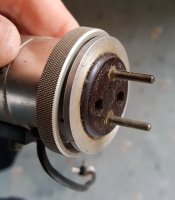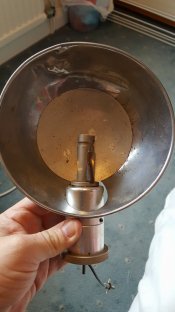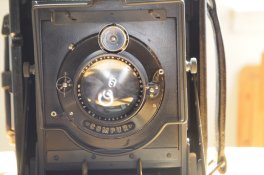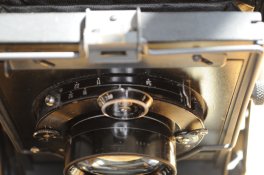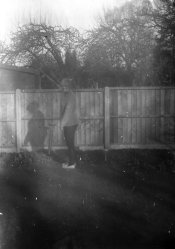Agulliver
Member
Hopefully this is a little out of the ordinary.
My late father was an engineer, and back in the late 50s he built a plate camera from various camera parts and added bits of his own manufacture. You might see that the tube which screws onto the side of the camera is designed to hold a battery, which can be used to trigger the shutter via an electric motor and to power an electric flash. It also has a range finder for which he ground the glass by hand, however this isn't working.
I don't believe this has been used in over 50 years. Dad passed away in 2008 so I can't ask him about this, I am going from memory. He told me it used quarter sized plates which seems correct. The focussing screen measures 3" x just over 4" but there are clear borders on the plates he took with this so they are probably 3.25 x 4.25 inch. I see that this is now a rare/unusual size for sheet film, which I could use if I wanted to take some photos with this camera.
Can anyone shed light on what parts were used to make this? The "WCG" logo is his initials, and his own design. The aperture and focus distance engravings are his handwriting. He didn't make any other cameras but had a long career in aircraft and lifeboat engineering and even longer in furniture testing.
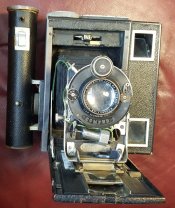
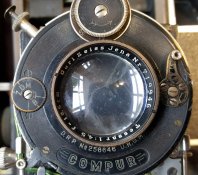
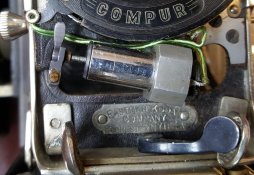
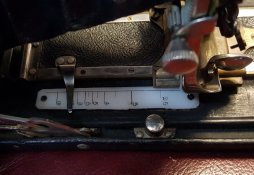
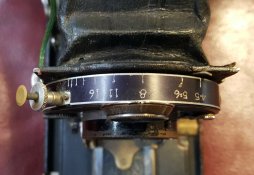
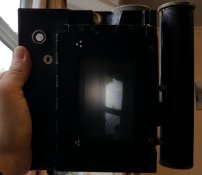
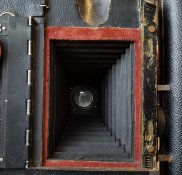
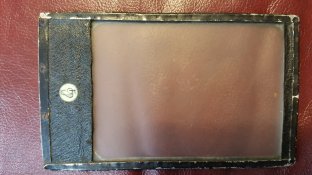
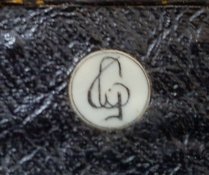
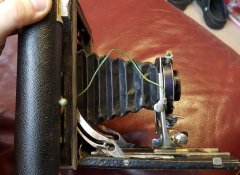
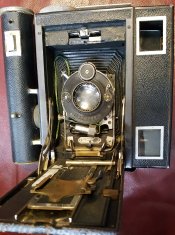
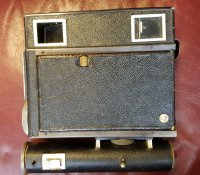
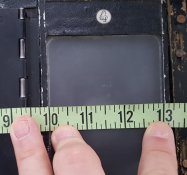
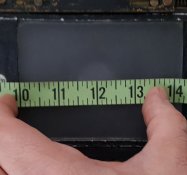
My late father was an engineer, and back in the late 50s he built a plate camera from various camera parts and added bits of his own manufacture. You might see that the tube which screws onto the side of the camera is designed to hold a battery, which can be used to trigger the shutter via an electric motor and to power an electric flash. It also has a range finder for which he ground the glass by hand, however this isn't working.
I don't believe this has been used in over 50 years. Dad passed away in 2008 so I can't ask him about this, I am going from memory. He told me it used quarter sized plates which seems correct. The focussing screen measures 3" x just over 4" but there are clear borders on the plates he took with this so they are probably 3.25 x 4.25 inch. I see that this is now a rare/unusual size for sheet film, which I could use if I wanted to take some photos with this camera.
Can anyone shed light on what parts were used to make this? The "WCG" logo is his initials, and his own design. The aperture and focus distance engravings are his handwriting. He didn't make any other cameras but had a long career in aircraft and lifeboat engineering and even longer in furniture testing.


















